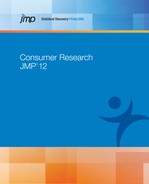Uplift Platform Overview
Use the Uplift platform to model the incremental impact of an action, or treatment, on individuals. An uplift model helps identify groups of individuals who are most likely to respond to the action. Identification of these groups leads to efficient and targeted decisions that optimize resource allocation and impact on the individual. (See Radcliffe and Surry, 2011.)
The Uplift platform fits partition models. While traditional partition models find splits to optimize a prediction, uplift models find splits to maximize a treatment difference.
The uplift partition model accounts for the fact that some individuals receive the treatment, while others do not. It does this by fitting a linear model to each possible (binary) split. A continuous response is modeled as a linear function of the split, the treatment, and the interaction of the split and treatment. A categorical response is expressed as a logistic function of the split, the treatment, and the interaction of the split and treatment. In both cases, the interaction term measures the difference in uplift between the groups of individuals in the two splits.
The criterion used by the Uplift platform in defining splits is the significance of the test for interaction over all possible splits. However, predictor selection based solely on p-values introduces bias favoring predictors with many levels. For this reason, JMP adjusts p-values to account for the number of levels. (See the paper “Monte Carlo Calibration of Distributions of Partition Statistics” on the JMP website.) The splits in the Uplift platform are determined by maximizing the adjusted p-values for t tests of the interaction effects. The logworth for each adjusted p-value, namely -log10(adj p-value), is reported.
..................Content has been hidden....................
You can't read the all page of ebook, please click here login for view all page.
